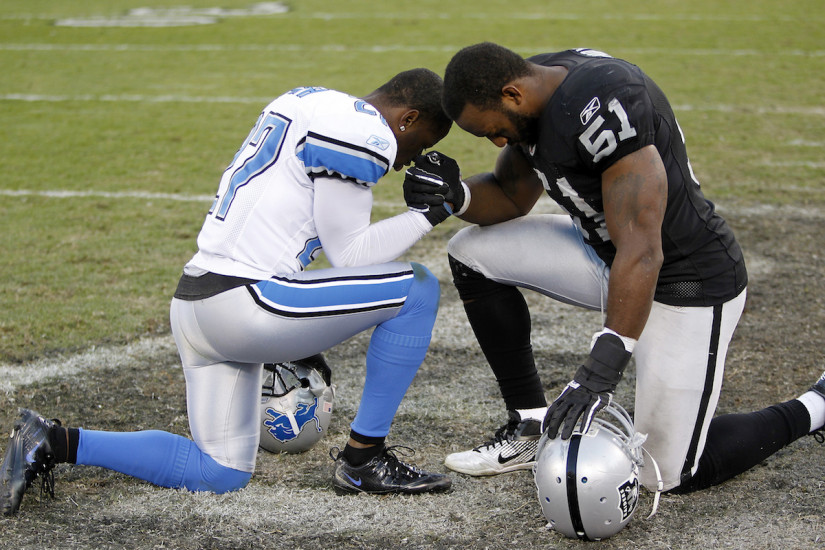We can begin where American football began in the late nineteenth century: the (later-to-be-named) “Ivy League” colleges in the Northeast. At the time, many were suspicious of the new game for its brutality and its tendency to divert attention from education. But some white, male, Anglo-Saxon Protestants saw the game as a godsend. For them, football provided a way to develop the physical and moral characteristics needed to maintain their authority at home in an age of immigration and extend it abroad in an age of American imperialism. By practicing and publicizing football-related prayer, they provided the game with moral gravitas fit for future leaders.
That ethos was on full display in 1893, when journalist Richard Harding Davis published an account of the Yale/Princeton Thanksgiving Day game in Harper’s Weekly. He concluded his essay with a glimpse of the victorious Princeton locker room. “Standing as they were, naked and covered with mud and blood and perspiration,” Davis wrote, “the eleven men who had won the championship sang the doxology from the beginning to the end,” a symbol of “how great and how serious is the joy of victory to the men who conquer.”
By the early 1900s, the image of the playing and praying “men who conquer” became so entrenched that it was given a statue. Sculpted by Daniel Chester French, “The Christian Student” was placed on Princeton’s campus in 1913. It depicted Earl Dodge, a football captain from the class of 1879, wearing his football uniform with an academic gown over his shoulder and books in his left hand—an elite white Protestant male with the physical, moral, and intellectual qualities to conquer and lead subject people at home and abroad.
The statue did not stand for long. Disillusioned by World War I and enthralled with consumer culture, in the 1920s students at prestigious northeastern schools adopted more cynical attitudes towards faith. The fate of “The Christian Student” served as a metaphor for the fate of praying football players in this new atmosphere: It was repeatedly defaced by drunk Princeton students, until finally at the end of the decade it was sent to storage for safekeeping.
But just as the public blending of football and prayer was cast off in the Ivy League, it was championed by less prestigious colleges. These underdogs saw prayer as a way to cultivate community pride and stake a claim for importance in mainstream American life.
